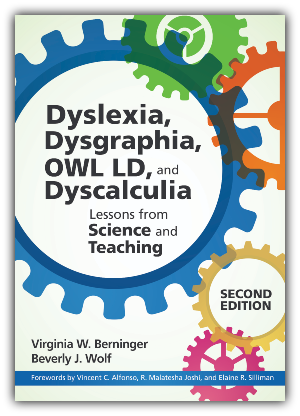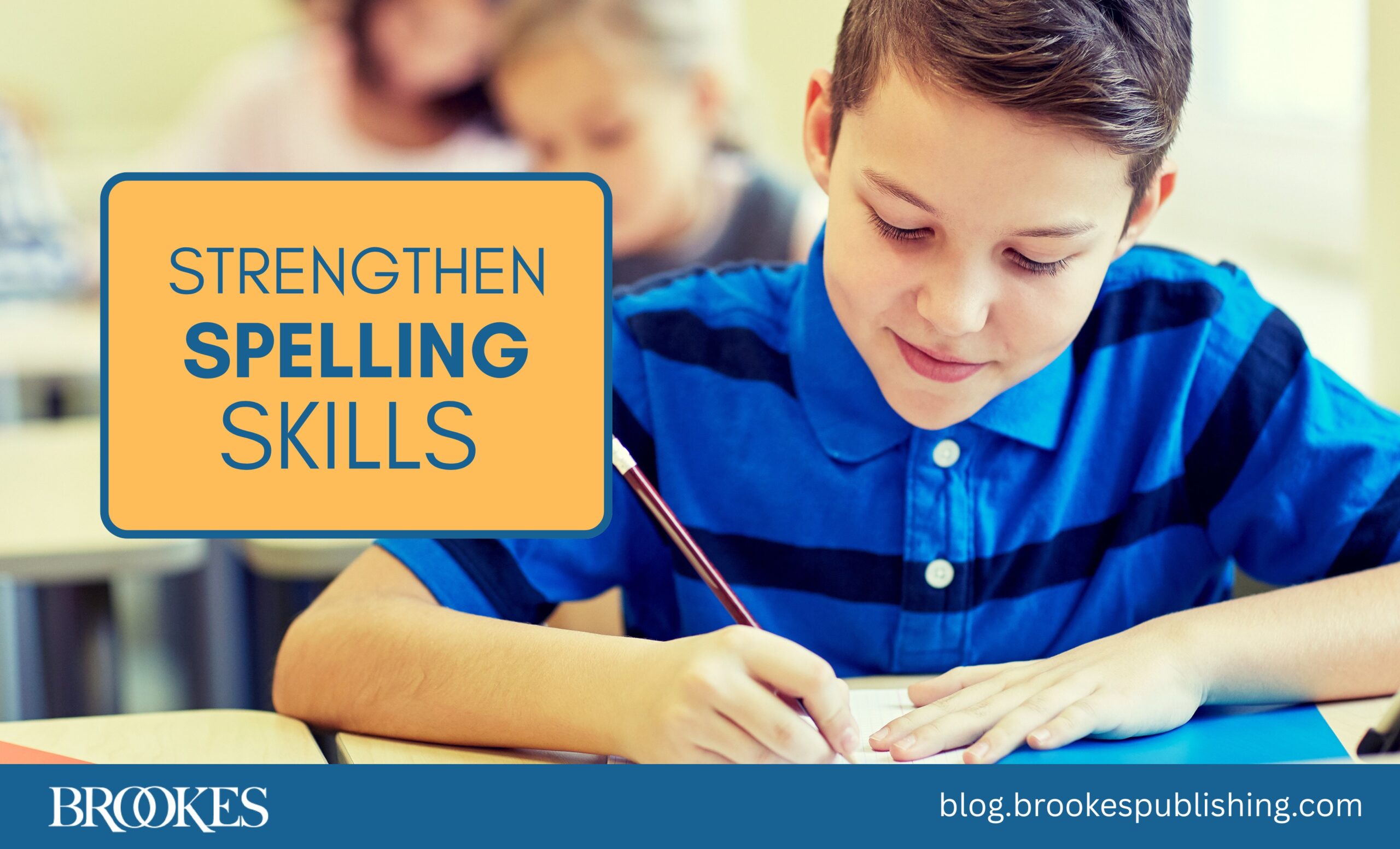10 Tips for Creating a Positive Learning Environment for Students with Dyslexia
November 18, 2025
 When you’re teaching students with dyslexia and other learning disabilities, creating a positive and supportive learning environment is essential. Adapted from the Brookes book Dyslexia, Dysgraphia, OWL LD, and Dyscalculia, here are 10 things you can do to strengthen your students’ readiness for learning and support their academic success.
When you’re teaching students with dyslexia and other learning disabilities, creating a positive and supportive learning environment is essential. Adapted from the Brookes book Dyslexia, Dysgraphia, OWL LD, and Dyscalculia, here are 10 things you can do to strengthen your students’ readiness for learning and support their academic success.
 Provide emotional safety that encourages students to take risks and allows them to make mistakes. Make it clear to students that you believe freedom to make mistakes is necessary for learning. Build the concept that an error is not failure by helping students self-correct and discover the correct response.
Provide emotional safety that encourages students to take risks and allows them to make mistakes. Make it clear to students that you believe freedom to make mistakes is necessary for learning. Build the concept that an error is not failure by helping students self-correct and discover the correct response.
 Praise hard work as well as accuracy. Students with dyslexia and other learning disabilities appreciate when adults understand how much effort it may take for them to learn to process, pronounce, and spell written words compared with their classmates. Promote self-esteem by acknowledging and celebrating evidence of thinking and problem-solving ability. Offer praise for good effort and performance judiciously; students know when praise is false.
Praise hard work as well as accuracy. Students with dyslexia and other learning disabilities appreciate when adults understand how much effort it may take for them to learn to process, pronounce, and spell written words compared with their classmates. Promote self-esteem by acknowledging and celebrating evidence of thinking and problem-solving ability. Offer praise for good effort and performance judiciously; students know when praise is false.
 Work in student interests. Link instruction in basic reading, writing, and oral language skills to students’ interests and to intellectually engaging content. This helps students with dyslexia and other learning disabilities sustain hard work over time. (This book by Paula Kluth is a fantastic resource for using student interests as teaching tools.)
Work in student interests. Link instruction in basic reading, writing, and oral language skills to students’ interests and to intellectually engaging content. This helps students with dyslexia and other learning disabilities sustain hard work over time. (This book by Paula Kluth is a fantastic resource for using student interests as teaching tools.)
 Guide students through the steps to success, give clues if necessary, and give the information students need to perform accurately. If a student misspells a word, for example, repeat the word clearly and ask the student to repeat it as well. “What sounds do you hear? How do you spell that sound?”
Guide students through the steps to success, give clues if necessary, and give the information students need to perform accurately. If a student misspells a word, for example, repeat the word clearly and ask the student to repeat it as well. “What sounds do you hear? How do you spell that sound?”
 Find the balance between challenge and overload. When tasks do not demand much intellectual energy, students may become bored; however, when tasks are too difficult, they may become discouraged and frustrated. When you see a student misbehaving, ask how the learning environment might be structured differently. Rather than jumping to the conclusion that the student has a behavioral problem, consider whether a behavior may be a signal that the student is frustrated because they so want to succeed.
Find the balance between challenge and overload. When tasks do not demand much intellectual energy, students may become bored; however, when tasks are too difficult, they may become discouraged and frustrated. When you see a student misbehaving, ask how the learning environment might be structured differently. Rather than jumping to the conclusion that the student has a behavioral problem, consider whether a behavior may be a signal that the student is frustrated because they so want to succeed.
 Prioritize multiple exposures. Students with specific learning disabilities may need more repeated exposures and practice than other students. To help students acquire mastery and the confidence to apply learning to a variety of situations, give them repeated practice over time.
Prioritize multiple exposures. Students with specific learning disabilities may need more repeated exposures and practice than other students. To help students acquire mastery and the confidence to apply learning to a variety of situations, give them repeated practice over time.
 Consider using a team approach to decoding or spelling unknown words. This minimizes the stigma of not knowing a word instantly and calls attention to the fact that the student is not alone—other students may face similar challenges. Using a team approach helps to create an atmosphere of support and acceptance. Few things are as gratifying as the applause of fellow classmates when a student, alone or through teamwork, is finally able to read or spell a word.
Consider using a team approach to decoding or spelling unknown words. This minimizes the stigma of not knowing a word instantly and calls attention to the fact that the student is not alone—other students may face similar challenges. Using a team approach helps to create an atmosphere of support and acceptance. Few things are as gratifying as the applause of fellow classmates when a student, alone or through teamwork, is finally able to read or spell a word.
 Offer visual learning supports. A readily accessed alphabet with manuscript and/or cursive letters at the students’ desks provides reinforcement for those with insecure recall. Prefix and suffix charts and vowel pattern charts should be clearly visible as well, on a wall or in a personal dictionary at each student’s desk. These will help students with encoding and decoding. Encourage students to refer to these learning aids whenever they struggle with immediate recall.
Offer visual learning supports. A readily accessed alphabet with manuscript and/or cursive letters at the students’ desks provides reinforcement for those with insecure recall. Prefix and suffix charts and vowel pattern charts should be clearly visible as well, on a wall or in a personal dictionary at each student’s desk. These will help students with encoding and decoding. Encourage students to refer to these learning aids whenever they struggle with immediate recall.
 Work with students to determine the best seating option. Help students recognize their own needs and what will work best for them. Providing preferential seating may not always mean front-row seating. Some need to be in front or near the teacher, while others work best when seated off to the side or in the back, away from distractions. Students are often the best judges of what works best for them.
Work with students to determine the best seating option. Help students recognize their own needs and what will work best for them. Providing preferential seating may not always mean front-row seating. Some need to be in front or near the teacher, while others work best when seated off to the side or in the back, away from distractions. Students are often the best judges of what works best for them.
 Stay flexible and don’t push. Know when to let go, try another strategy, let it rest, or change direction to take advantage of teachable moments. If a student doesn’t readily grasp what is being taught that day, don’t push them to do so. Reintroduce the concepts or procedures on another day. With a fresh start, the student may grasp what is being taught.
Stay flexible and don’t push. Know when to let go, try another strategy, let it rest, or change direction to take advantage of teachable moments. If a student doesn’t readily grasp what is being taught that day, don’t push them to do so. Reintroduce the concepts or procedures on another day. With a fresh start, the student may grasp what is being taught.
By recognizing effort, staying attentive to student needs, and building a spirit of support and cooperation, you can promote your students’ self-esteem and help improve their academic outcomes. For more guidance on supporting students with dyslexia and other learning disabilities, get the book behind today’s post!




Write a Comment
Your email address will not be published. Required fields are marked *
Post a Comment